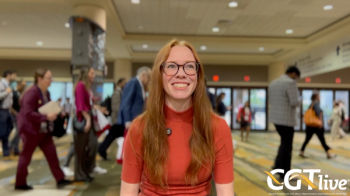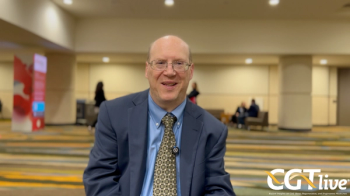
GUCY2D Gene Therapy Shows Promise for Leber Congenital Amaurosis
The gene therapy SAR439483 demonstrated promising early signs of activity in patients with Leber congenital amaurosis caused by biallelic mutations in GUCY2D.
The gene therapy formally known as SAR439483, which is now being developed by Atsena Therapeutics, demonstrated promising early signs of activity in patents with Leber congenital amaurosis (LAC) caused by biallelic mutations in GUCY2D, according to findings from a phase 1 study published in the journal iScience.
Results from the phase 1 study indicated that 2 of the 3 patients treated with SAR439483 had a statistically significant improvement in rod photoreceptor vision in their treated eye from baseline and compared with their untreated eye. Moreover, 1 of these individuals also experienced improvement in pupillary responses. Visual acuity remained stable from baseline in both patients. A third patient did not experience a change in rod sensitivity; however, there was a gain in cone-photoreceptor function.
The data from the first 3 patients reported in iScience were from the lowest available dose explored in the study. Subsequent patients will be enrolled at higher doses (NCT03920007).
“We found sustained improvements in both day and night vision, even with a relatively low dose of the gene therapy,” lead study author Samuel G. Jacobson, MD, PhD, a professor of Ophthalmology in the Perelman School of Medicine, noted in a statement.
SAR439483 is a recombinant AAV5-mediated therapy encoding the GUCY2D gene. It is administered as a subretinal injection into a bleb, which was placed on the macula or the superior retina, if the macula was not feasible. Patients 1 and 3 received the therapy via the macula whereas patient 2 was dosed via the superior retina bleb at a lower volume. All patients enrolled in the phase 1/2 study had severe visual loss and nystagmus at baseline but had preserved retinal structure. The phase 1/2 study plans to enroll 15 total patients across escalating doses.
The primary end point of the study is focused on safety and identifying a maximum tolerated dose. To gauge efficacy of the treatment, investigators assess visual sensitivities in a dark-adapted state at baseline and again at 9 months following treatment.
Immediately following the injection, all patients experienced a reduction in full-field stimulus testing (FST) relative to baseline (range, 0.2-1.0); however, by 30 to 60 days post treatment, baseline levels were regained in patients 2 and 3 and an improvement in FST was noted in patient 1 (median improvement, 1.34; range, 1-1.4 lu, P <.01). These benefits were noted at the 30-day mark and continued with additional follow up. In patient 2, benefits were noted by 60 days. From this time point on, there was a median 0.59 lu improvement (range, 0.33-0.78). There were no post-operative improvements in FST for patient 3 (median, 0.06 Iu; range, -0.1 to 0.15).
The benefits observed from baseline in patients 1 and 2 were also seen when comparing between treated and untreated eyes. In patient 1, this was 0.97 Iu (P <.01) and for patient 2 this benefit was 0.48 Iu (P ≤.01 at all visits except 89 days P = .13).
For visual acuity, patient 1 could only see light and could not read ETDRS letters, which prevented measurement. Throughout the trial, patient 1 continued to be light perceptive. Patient 2 had an acuity of 1.19 in the right eye and 1.25 in the left. There was no change following treatment. In patient 3, there was asymmetry in acuity and the worse eye was selected for the subretinal injection. There was a 0.3 logMAR improvement in this eye that persisted throughout the study. The untreated eye remained similar to baseline acuity.
“These initial results from the first-ever trial of a GUCY2D gene therapy are very encouraging and will inform our ongoing and future trials of this therapy,” co-investigator Artur V. Cideciyan, PhD, a research professor of Ophthalmology in the Perelman School of Medicine, said in a statement.
There were no signs of serious adverse events (AEs) in the eye or systemically. Following the subretinal injection, all patients experienced some mild discomfort, subconjunctival hemorrhage, and reduced intraocular pressure; however, these ocular AEs all resolved. Patient 3 experienced some signs of vitreous cellularity, resulting in steroid use for 8 days and subsequent steroid-induced ocular hypertension. The patient was switched to a different therapy. Additionally, there was also a retinal hole that was repaired via laser in this patient. These AEs all resolved within 14 days.
The company developing the therapy, Atsena Therapeutics, was launched in early 2020 following $8.15 million in Series 1 funding. In December 2020, the company received an additional $55 million in series A funding. The company acquired rights to the GUCY2D therapy for LCA in July 2020. The therapy was developed in the laboratory of the co-founder and chief scientific officer Shannon Boye, PhD, as well as by the co-founder and chief technology officer Sanford Boye, MSc.
“We are thrilled that our gene therapy for LCA1 is coming home to Atsena and that we will have the opportunity to further its development,” Shannon Boye, said when the product was acquired. “Atsena was founded to advance treatments for inherited retinal diseases and believes in centering patients’ perspectives and needs in all we do. We are honored to continue to work with LCA1 patients and their families as we strive to treat this debilitating disease.”
In addition to SAR439483 for LCA, the company is also exploring an AAV-mediated gene therapy for Usher syndrome type IB and another for an undisclosed indication. These therapies are currently in preclinical development.
Newsletter
Stay at the forefront of cutting-edge science with CGT—your direct line to expert insights, breakthrough data, and real-time coverage of the latest advancements in cell and gene therapy.

















































